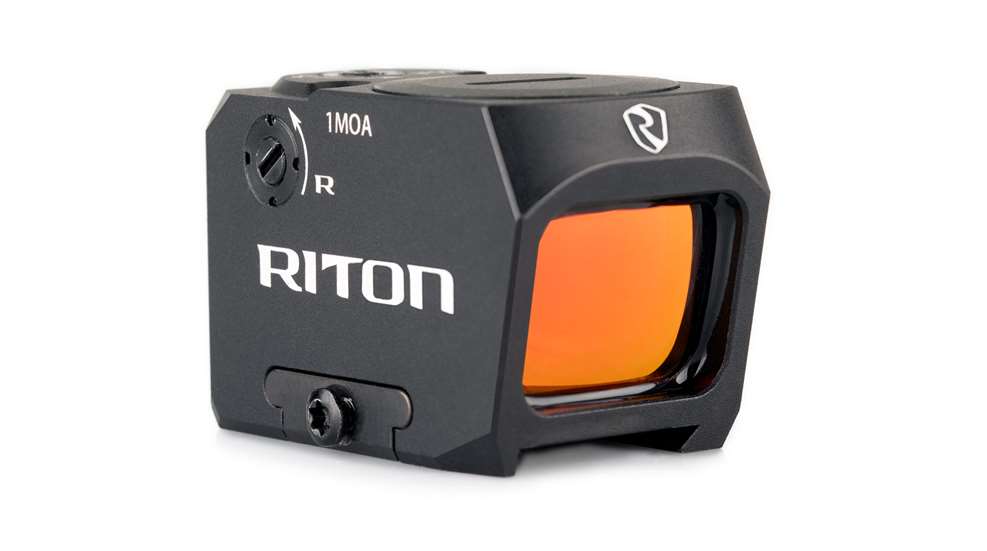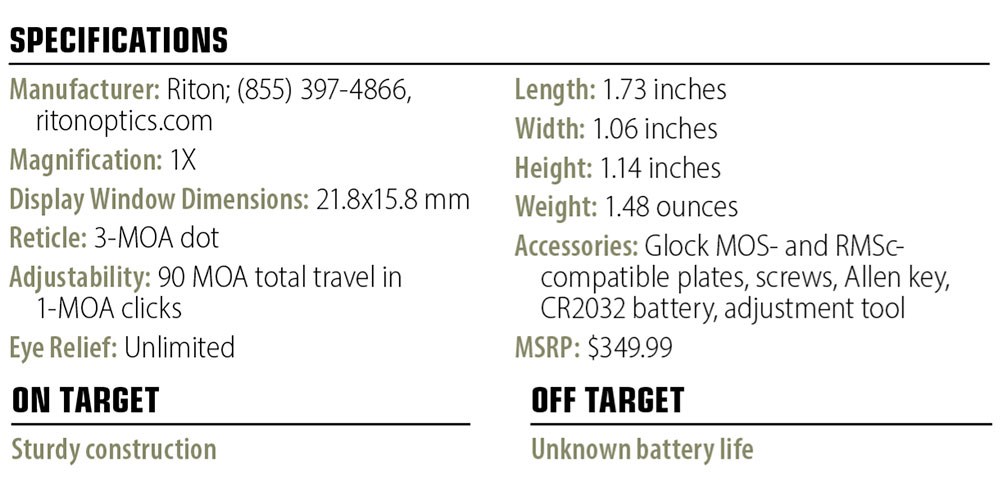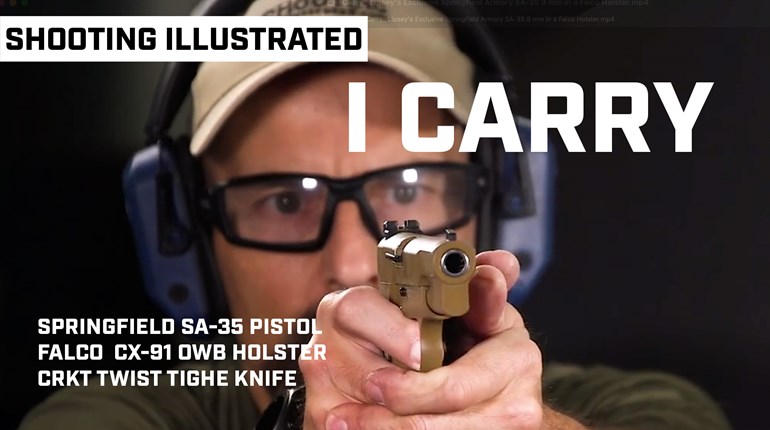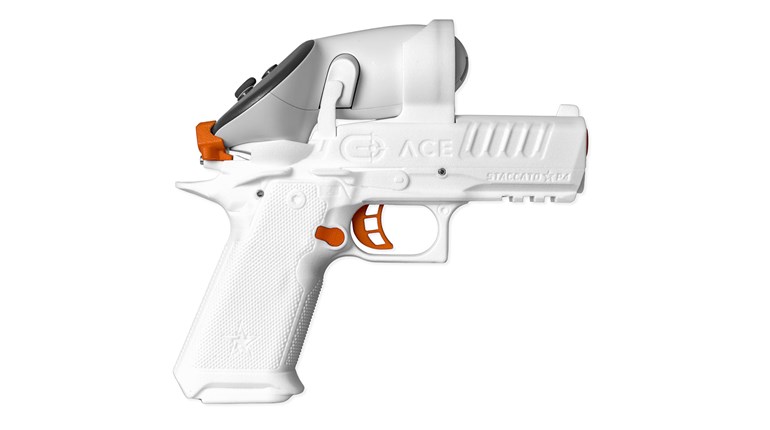
As if we need further evidence of the growing popularity of pistol-mounted red-dot sights in general, and of the enclosed-emitter variety in specific, Riton has entered the market with its 3 Tactix EED sight. The firm has offered open-emitter models for a few years now, starting with the 3 Tactix PRD in the late 20-teens and the MPRD and MPRD2 series earlier in the 2020s. Riton’s entire line of pistol-dot sights are RMSc-footprint compatible and maintain the value for which the brand is known.
The newest addition to the 3 Tactix family of red-dot sights is the EED (Enclosed-Emitter Dot), and it continues Riton’s line of affordable, reliable optics. Simple to use and robust, the EED offers a 3-MOA dot, simple controls for adjusting brightness and 1-MOA-graduated dials for adjusting windage and elevation. Add a top-mounted battery compartment so that once mounted, there’s no need to take the EED off, and the 3 Tactix EED enclosed-emitter red-dot sight can greatly add to your EDC pistol—although with its 1.5-ounce weight, heft won’t be one of the things it adds.
When it comes to attaching the 3 Tactix EED to your pistol of choice, Riton has been especially smart. Since the enclosed-emitter design precludes direct-attachment methods owing to the full-tube body, a plate is needed to marry the optic and the pistol’s slide. Riton cleverly designed the EED to use the Aimpoint Acro footprint, meaning that aftermarket plates are available from a variety of trusted manufacturers like C&H Precision Weapons, Apex Tactical and others.

When it comes to mounting the 3 Tactix EED to a Glock MOS slide, there are a couple things to note. First, it actually reduces the number of attachment points compared to an open emitter. Glock’s MOS system requires that an adaptor plate be screwed to the MOS cut, then the optic attached to the plate. That’s four screws to torque down and/or Loctite, and two of those screws can’t be marked to check for potential movement (the screws holding the plate to the slide are obviously covered by the optic itself). When adding the EED, it’s two screws for the adaptor and then the single cross-mount screw on the optic itself. The second note is that, since the EED is slightly thinner than full-size enclosed emitter sights, it’s more streamlined on a compact or full-size pistol slide like that of the Glock G19.
After successfully mounting the EED, zeroing it is a simple procedure. Audible, 1-MOA adjustment clicks for windage and elevation mean some math will be needed if you’re zeroing at closer than 100 yards, but getting the optic on target is simple. We followed the same general protocol as that espoused by Scott Jedlinski of Modern Samurai Project, getting a rough zero at 10 yards, checking it at 25 yards, then refining it back at the 10-yard line. Zeroing the EED took less than a full magazine of ammunition in the G19 used to test it.
Once zeroed, the EED was used in a series of drills to check how easily it could be picked up. From 5x5x5 drills to The Test to the Bill Drill, passing scores were easily achieved using the EED, with the 3-MOA dot clearly visible in the 21.8x15.8 mm viewing window. Should you get complacent and forget to change the battery, the housing itself makes for a decent rough sight in an emergency situation, and center-of-mass hits out to 10 yards are achievable using this backup method. No information on battery life is available on the Riton website for the EED, but it uses an inexpensive and plentiful CR2032 battery, so changing it once a year won’t set you back a ton. And again, with the top-mounted battery compartment, it’s quick and easy to swap old batteries for new.
Range time was uneventful, with no change in zero observed in more than 150 rounds. While this is certainly no exhaustive test of the optic’s ability to hold zero, it is generally sufficient to spot any glaring problems with the mount, dot or electronics.
What’s the final verdict on the Riton 3 Tactix EED enclosed-emitter red-dot sight? I experienced no problems on the range with the dot for more than approximately 150 rounds between sight-in, drills and accuracy testing. While this isn’t a torture test, it’s a good start and a decent indicator of solid performance. When it comes to affordable enclosed-emitter optics, the EED is a solid choice.





































